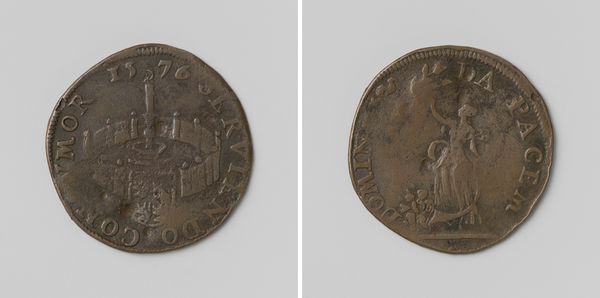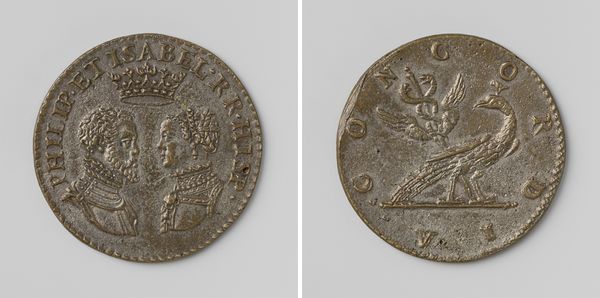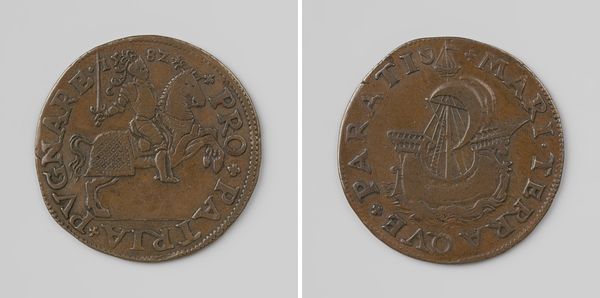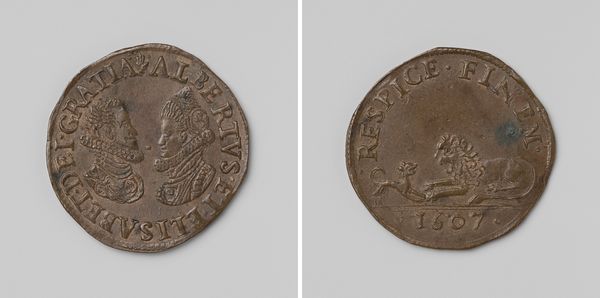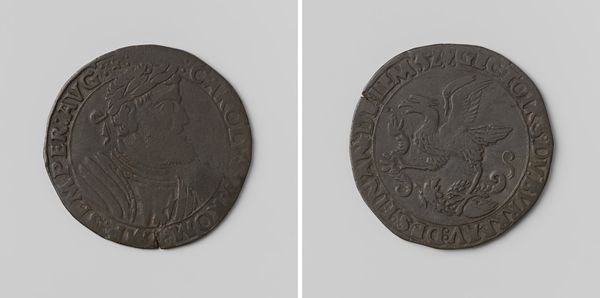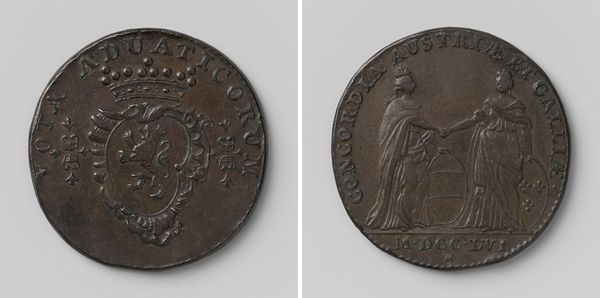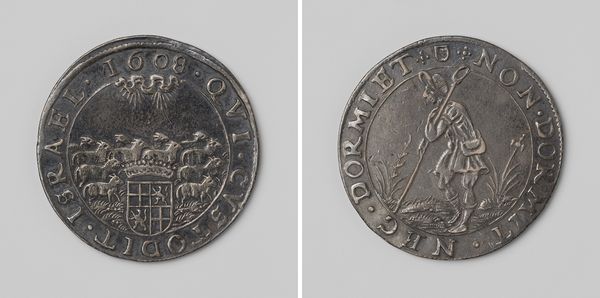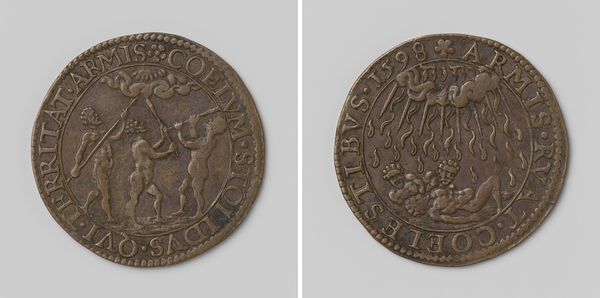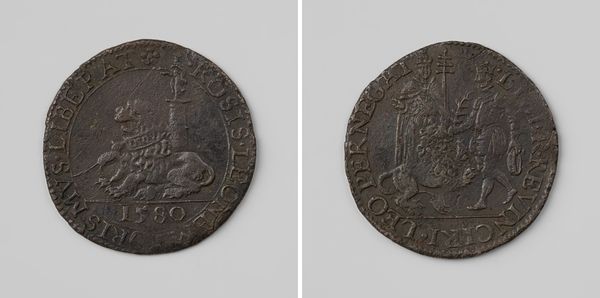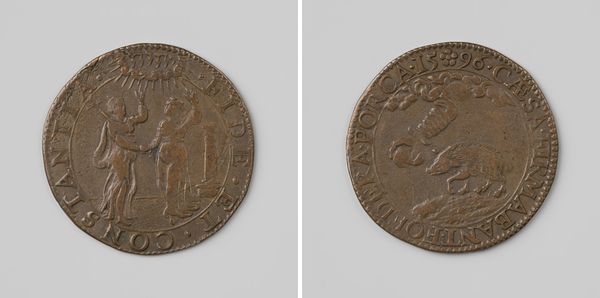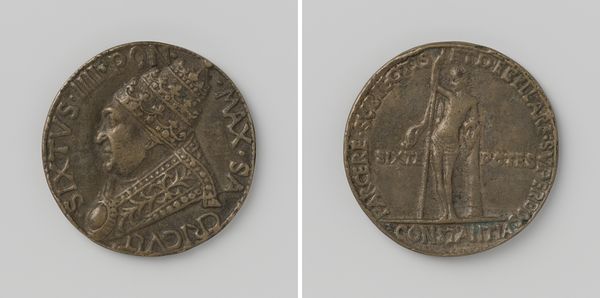
print, metal, relief, bronze
#
medieval
# print
#
metal
#
sculpture
#
relief
#
bronze
Dimensions: diameter 3.1 cm, weight 6.60 gr
Copyright: Rijks Museum: Open Domain
Curator: This is a commemorative medal titled "Inname van Grave," or "Taking of Grave," crafted around 1602. It’s a bronze relief print. What's your initial reaction to this piece? Editor: There’s a sense of... industrious solemnity. It's surprisingly grounded. Even in celebrating conquest, it’s focused on labour and the tools that enact that power. Curator: Exactly. Look closely at the medal's construction. The choice of bronze and the relief printing process—replicable and durable—speak to the intended broad dissemination of its message. It transforms an event into a tangible commodity, reinforcing collective memory. Editor: And that message is heavily symbolic. We have, on one side, a laborer operating some sort of dredging machine with the family crest just below. On the reverse is a spade and laurel wreath. A potent blend of hard work, victory, and authority. It's as though the medal insists that triumph springs directly from earthly efforts. Curator: The spade’s direct connection to soil further suggests the establishment of claims, of laying down the law upon the land, so to speak. The laurel, of course, universally signifies victory and honor. Editor: Absolutely. But notice how the laurel seems almost... suspended above the spade, implying the spoils of war hanging over these acts of brutal land-work and siege. The spade isn't just a tool, it's a foundation for that victory. The very act of besieging becomes sacred somehow. Curator: The inscription further enriches the medal's layers. "ARS.GRAVE.TOLLIT.LONGE" roughly translates to 'skill raises Grave high,' with a date shown at the top and other latin words. The work becomes inextricably bound with national and individual accomplishment. The raw labor is alchemized into symbolic weight. Editor: Looking at this object, I am reminded that conquest is as much about managing material resources and deploying manual labor as it is about military tactics and bravery. The creation of the object itself follows a similar material production process that mimics this. Curator: This close look shows us how objects, especially medals of this kind, acted as vital tools in shaping public opinion, translating actions into powerful, portable narratives that lasted well beyond the depicted event. Editor: It makes you wonder about the human cost—who labored, who celebrated, and whose story remains untold.
Comments
No comments
Be the first to comment and join the conversation on the ultimate creative platform.
